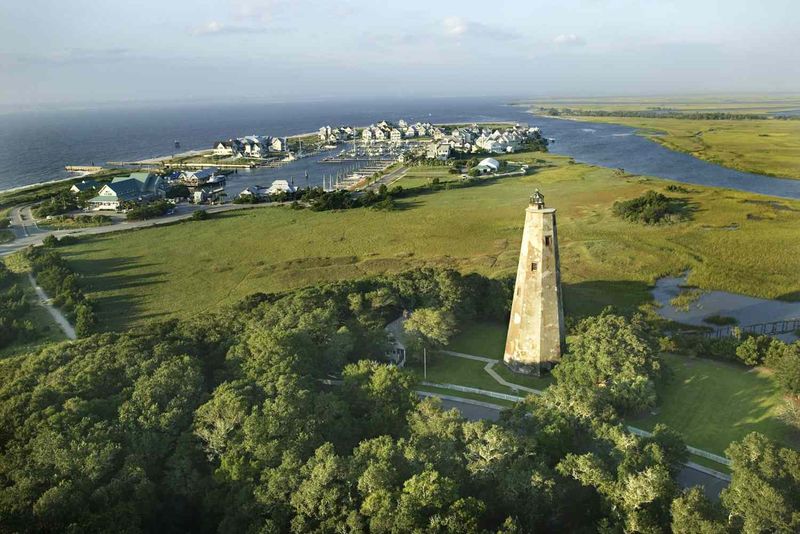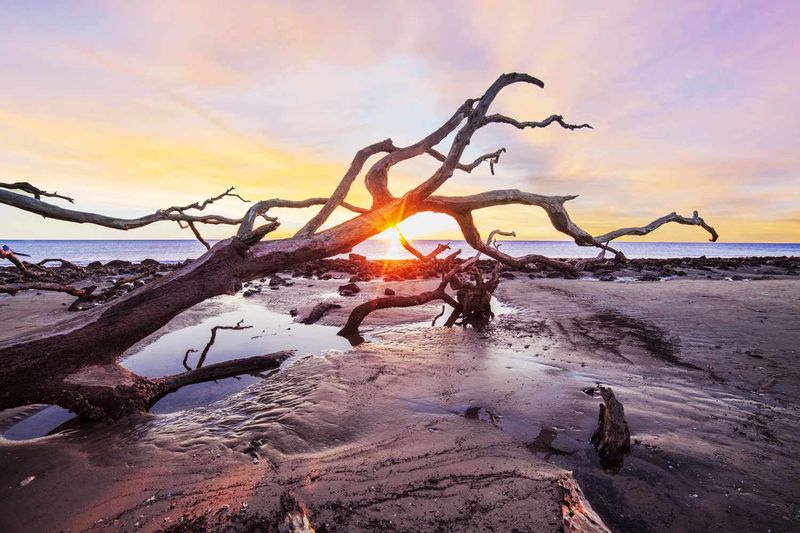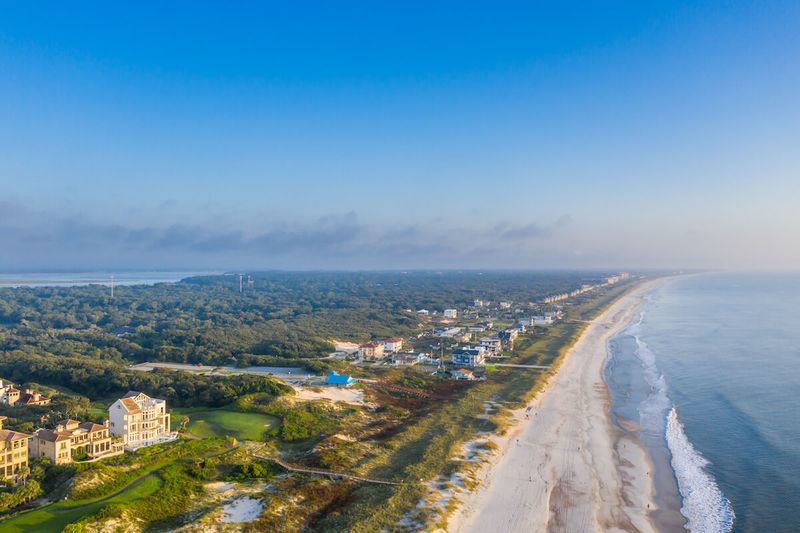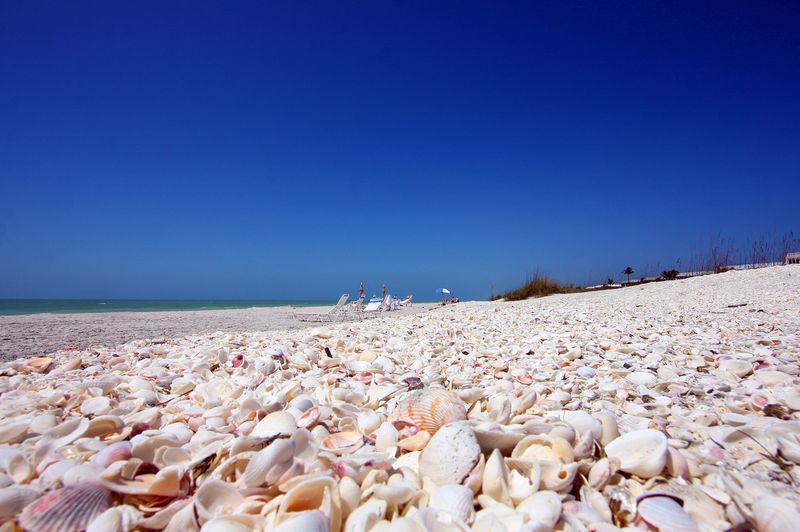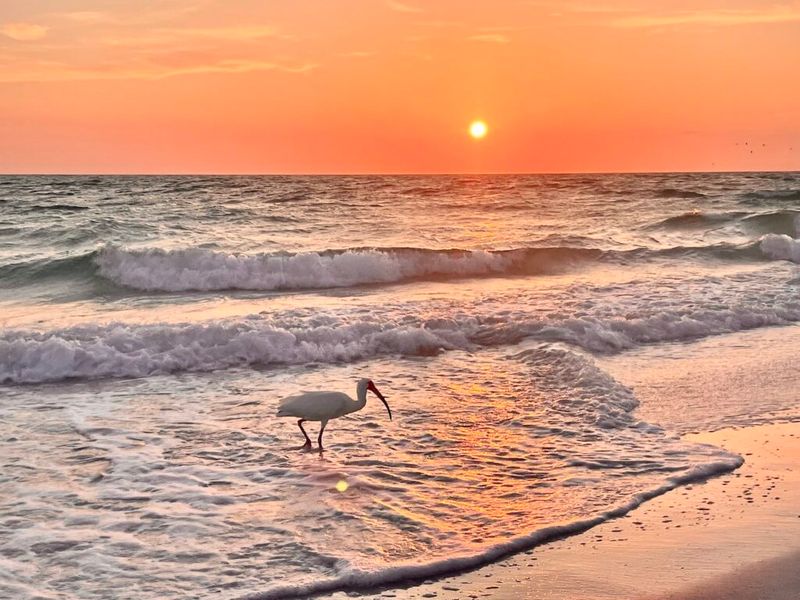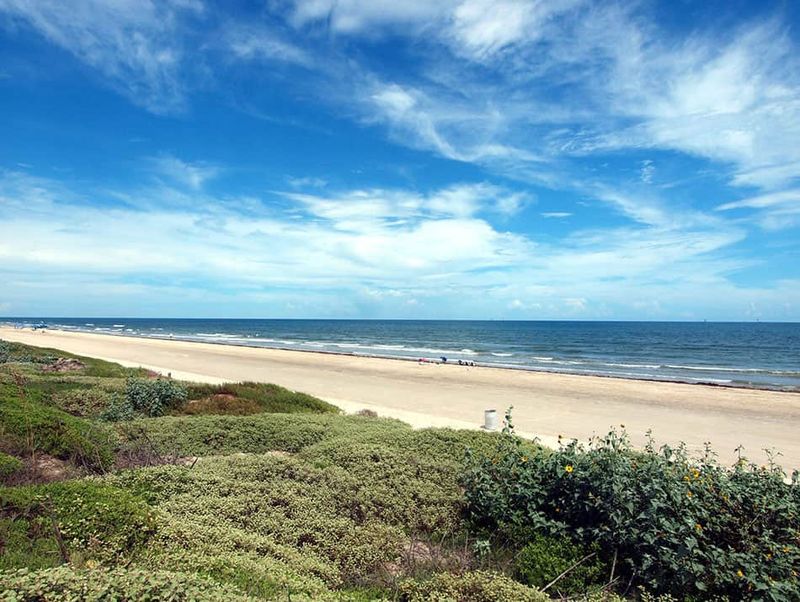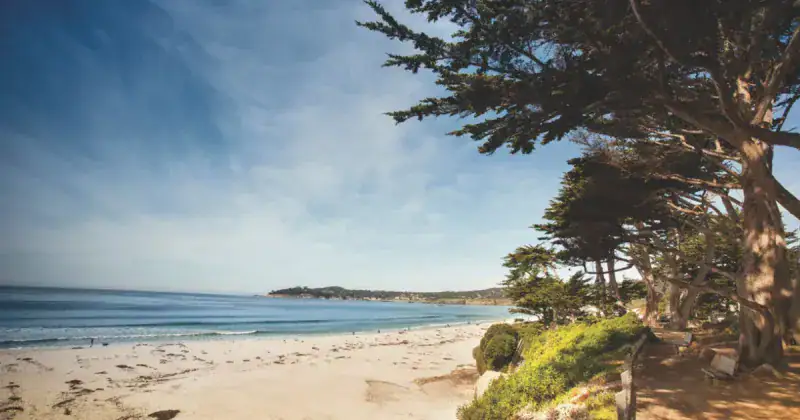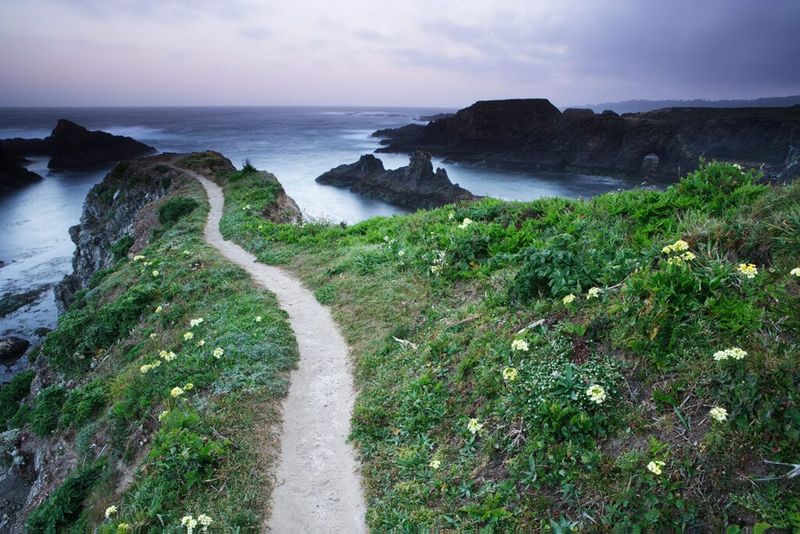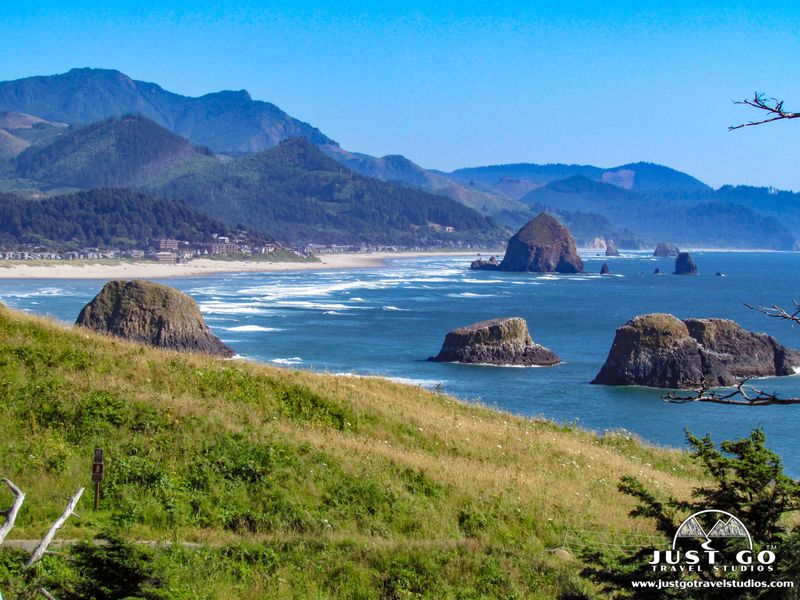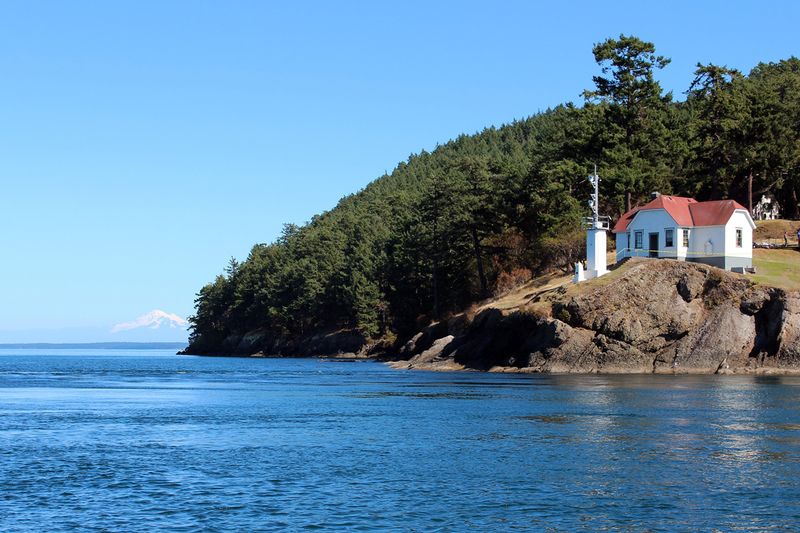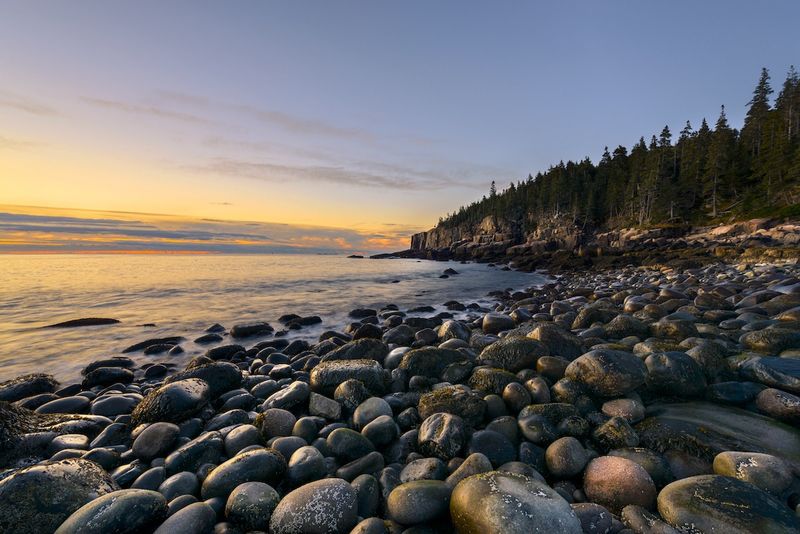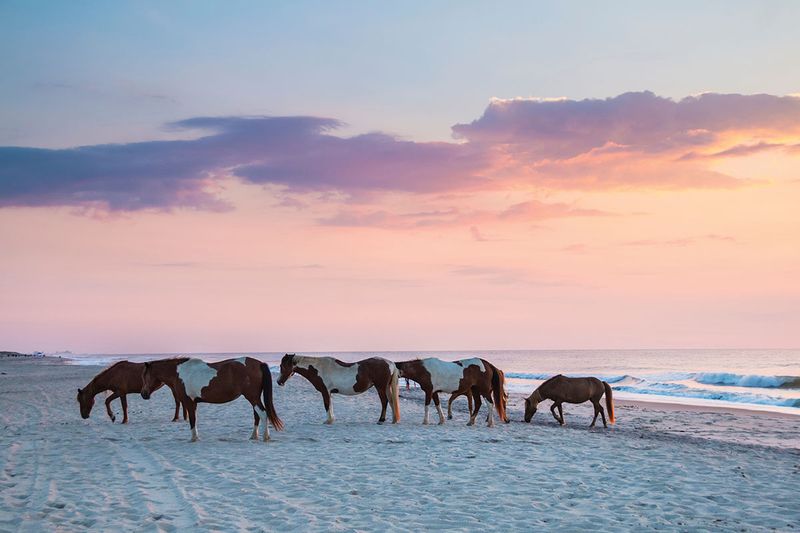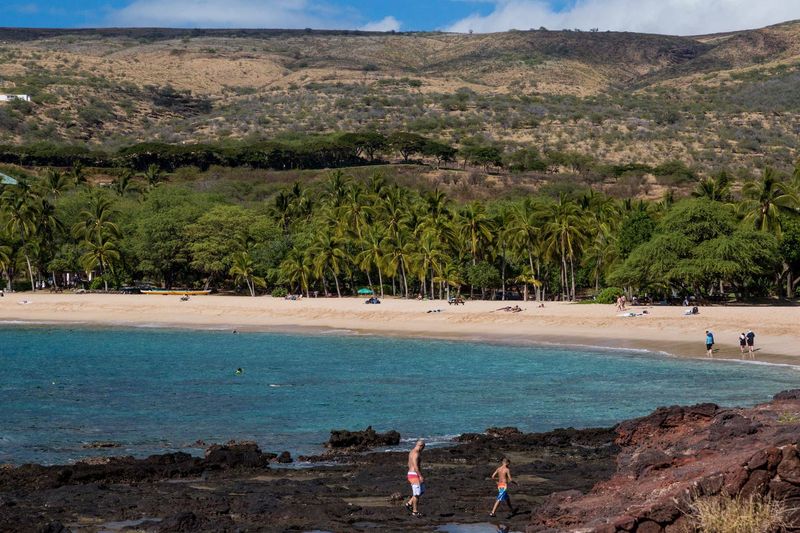Sometimes you need to escape the hustle and bustle of everyday life and find a place where waves wash your worries away. America’s coastlines offer countless peaceful retreats where you can slow down, breathe deeply, and reconnect with nature’s rhythm. These hidden gems and beloved havens provide the perfect backdrop for your next rejuvenating vacation. Pack your sunscreen and prepare to discover some of the most tranquil coastal escapes our country has to offer.
1. Ocracoke Island, North Carolina (Outer Banks)
Wild ponies graze peacefully behind wooden fences while endless stretches of pristine sand beckon visitors to this remote barrier island paradise. Getting here requires a ferry ride, which immediately signals that you’re entering a different world—one where time moves slower and stress melts away with each ocean breeze.
Miles of undeveloped coastline within Cape Hatteras National Seashore provide the perfect setting for long, meditative walks. Summer brings lifeguards to the main beach area, making it family-friendly while still maintaining its untamed beauty.
When darkness falls, the magic truly begins. Light pollution is minimal here, creating some of the best stargazing opportunities on the East Coast.
2. Bald Head Island, North Carolina
Car engines never disturb the peace on this unique island retreat where golf carts and bicycles rule the sandy roads. A short twenty-minute ferry ride from Southport transports you to a world where the loudest sounds are crashing waves and seabird calls.
Winding bike paths connect charming beach houses to secluded stretches of shoreline, making exploration both easy and enjoyable. The island’s compact size means you can pedal from one end to the other in under an hour, discovering hidden coves and peaceful picnic spots along the way.
Old Baldy lighthouse stands as a historic sentinel, offering panoramic views that make the climb worthwhile. East Beach provides spectacular sunrise viewing for early risers.
3. Kiawah Island, South Carolina
Nature preserves and conservation areas dominate this barrier island, ensuring that development never overwhelms the natural beauty. Ten miles of Atlantic coastline stretch before you, offering plenty of space to find your own private slice of paradise.
Beachwalker Park anchors the island’s western end, where spectacular sunsets paint the sky in brilliant oranges and pinks. The wide, uncrowded beaches provide ideal conditions for shell hunting, bird watching, or simply letting your mind wander as waves roll endlessly onto shore.
Maritime forests and salt marshes create diverse ecosystems that support abundant wildlife. Dolphins frequently play in the surf just offshore, delighting visitors who pause to watch their graceful movements.
4. Jekyll Island, Georgia
Georgia law mandates that sixty-five percent of this island remain forever undeveloped, creating a permanent sanctuary where nature reigns supreme. Ancient oak trees draped in Spanish moss create cathedral-like canopies that filter sunlight into dancing patterns on forest floors.
Driftwood Beach showcases one of nature’s most artistic displays, where skeletal trees create sculptural masterpieces against golden sand. Photographers flock here during golden hour when the weathered wood glows like ancient sculptures in a natural gallery.
Tidal timing transforms your beach experience dramatically. Low tide reveals tide pools teeming with marine life and expands the walking area significantly, while high tide brings waves closer to the driftwood sculptures.
5. Amelia Island, Florida
Victorian architecture lines historic streets while thirteen miles of pristine beaches stretch northward, creating a perfect blend of cultural charm and natural beauty. Fernandina Beach’s downtown district feels like stepping back in time, with tree-lined streets and antique shops beckoning exploration.
Beyond the main beach areas, quieter stretches await those seeking solitude. The island’s northern tip offers exceptional shelling opportunities, particularly during sunrise when the beaches belong primarily to early-rising treasure hunters and shore birds.
Historic Fort Clinch State Park anchors the island’s northern end, providing hiking trails through maritime hammock and opportunities to explore Civil War history. The combination of history, nature, and relaxation creates an uniquely satisfying coastal experience.
6. Sanibel Island, Florida
Shell collectors consider this island paradise their holy grail, where currents deposit treasures from across the Gulf of Mexico onto welcoming shores. The famous “Sanibel Stoop” describes the posture visitors naturally adopt while scanning the sand for perfect specimens.
J.N. “Ding” Darling National Wildlife Refuge transforms the island’s interior into a birding wonderland where hundreds of species find sanctuary among mangrove tunnels and shallow lagoons. Early morning visits often yield the best wildlife viewing opportunities.
Low tide timing becomes crucial for both shelling success and wildlife observation. Rangers recommend checking tide charts before planning your day, as the exposed flats during low tide reveal both the best shells and feeding opportunities for wading birds.
7. Anna Maria Island, Florida
Free trolleys eliminate the need for cars on this laid-back barrier island, instantly slowing your vacation pace to match the gentle rhythm of Gulf waves. Colorful beach cottages line sandy streets where golf carts outnumber automobiles and flip-flops count as formal wear.
Bean Point crowns the island’s northern tip, offering some of Florida’s most spectacular sunset viewing. Golden hour transforms this quiet beach into a natural amphitheater where the day’s final performance never disappoints.
The trolley system connects three distinct communities—Bradenton Beach, Holmes Beach, and Anna Maria—each with its own personality. Hopping between them becomes part of the adventure, allowing you to discover different restaurants, shops, and beach access points without transportation worries.
8. Mustang Island & Port Aransas, Texas
Five miles of protected coastline within Mustang Island State Park provide endless opportunities for restorative beach walks where your only companions are sandpipers and ghost crabs. The Great Texas Coastal Birding Trail passes through this area, bringing magnificent species migrations within easy viewing distance.
Winter months transform the region into a birding hotspot as species from across North America converge along the Texas coast. Patient observers with binoculars often spot rare visitors alongside year-round residents.
Surf fishing enthusiasts find ideal conditions here, where red drum, speckled trout, and other Gulf species cruise just beyond the breakers. The meditative nature of casting into rolling waves provides its own form of relaxation, whether fish cooperate or not.
9. Carmel-by-the-Sea, California
Fairy-tale cottages with whimsical architecture create a storybook setting where many homes traditionally lacked street addresses, adding to the village’s enchanting character. White sand Carmel Beach provides a stunning contrast to the darker Pacific coastline found elsewhere in California.
Evening beach fires are a cherished local tradition, where visitors gather to watch spectacular sunsets while staying warm beside crackling flames. Local regulations ensure these fires remain environmentally responsible and safe for all beachgoers.
Ocean Avenue descends directly to the beach, creating one of California’s most picturesque walks. Barefoot strolls from the village center to the water’s edge have become a rite of passage for first-time visitors seeking that perfect Instagram moment.
10. Mendocino, California
Victorian buildings perch dramatically on bluffs high above the Pacific, creating one of California’s most photographed coastal scenes. Mendocino Headlands State Park wraps around the village, providing clifftop trails where sea spray and fresh air create natural aromatherapy.
Morning walks along the bluff trails offer meditation in motion as waves crash against rocky outcroppings far below. The rhythmic sound of surf becomes a natural soundtrack for contemplation and stress relief.
Wildflower seasons transform the headlands into colorful carpets that complement the deep blue ocean beyond. Spring brings the most spectacular displays, though each season offers its own unique beauty and peaceful walking opportunities along well-maintained trails.
11. Cannon Beach & Ecola State Park, Oregon
Haystack Rock rises majestically from the sand like a natural cathedral, creating tide pools that serve as windows into marine ecosystems. During spring and summer months, tufted puffins nest on the rock’s upper reaches, delighting birdwatchers with binoculars.
Ecola State Park’s forested headlands provide elevated perspectives of Oregon’s rugged coastline, where picnic tables overlook endless ocean vistas. The contrast between dense Pacific Northwest forests and wide-open beaches creates uniquely diverse scenery.
Indian Beach trail offers a gentle hike through old-growth forest before emerging onto a secluded stretch of sand. This quiet beach provides perfect conditions for contemplative walks and tide pool exploration away from Cannon Beach’s busier areas.
12. San Juan Island, Washington
Gentle harbors and lighthouse viewpoints create a maritime paradise in the Salish Sea, where ferry rides between islands become scenic adventures in themselves. The slower pace of island life encourages visitors to abandon rigid schedules in favor of following whims and weather.
Lime Kiln Point State Park offers world-renowned whale watching opportunities from shore, where patient observers with binoculars often spot orcas, minke whales, and other marine mammals. The park’s nickname “Whale Watch Park” reflects its reputation among marine wildlife enthusiasts.
Sunset viewing at Lime Kiln Point provides the perfect ending to island days, where lighthouse beams begin their nightly dance across waters that may still hold whale spouts on the horizon.
13. Schoodic Peninsula (Acadia’s Quiet Side), Maine
Intentionally managed for minimal development and low visitation, this section of Acadia National Park delivers the same granite coastline drama with fraction of the crowds found elsewhere in the park. Rocky ledges and crashing waves create nature’s most powerful symphony.
The one-way scenic loop road provides multiple pullouts where visitors can safely park and explore ocean-pounded granite formations. Each stop offers different perspectives of Maine’s rugged beauty and opportunities for quiet contemplation.
Photography enthusiasts particularly appreciate the dramatic interplay between ancient granite and powerful Atlantic swells. Storm watching becomes especially spectacular here, though visitors should always respect safety barriers and wave conditions when exploring the rocky shoreline.
14. Assateague Island, Maryland/Virginia
Wild barrier island landscapes host feral horses that roam freely across dunes and marshlands, creating magical encounters for visitors who maintain respectful distances as park guidelines require. These magnificent animals have adapted perfectly to harsh coastal conditions over generations.
Raw, undeveloped beaches stretch for miles without boardwalks or concession stands, offering pure coastal experiences where nature sets the agenda. Sunrise often brings solitary moments with only shorebirds for company.
The island’s dual state management creates interesting variations in regulations and access points, but both sides deliver the same wild beauty. Camping opportunities allow extended stays where you can truly disconnect from modern pressures and reconnect with natural rhythms.
15. Lāna’i, Hawaiʻi (Hulopoʻe Bay)
Golden sand crescents frame crystal-clear waters within a Marine Life Conservation District, where healthy coral reefs create underwater gardens visible even from the surface. Calm conditions make this bay ideal for peaceful snorkeling adventures among tropical fish.
Tide pools at the bay’s left point reveal miniature ecosystems where hermit crabs, sea urchins, and small fish create fascinating displays. Posted safety notices help visitors explore responsibly while protecting delicate marine environments.
The bay’s protected status ensures that both above and below water experiences remain pristine. Swimming here feels like floating in an aquarium where parrotfish, butterflyfish, and other tropical species go about their daily routines seemingly unbothered by respectful human visitors.


